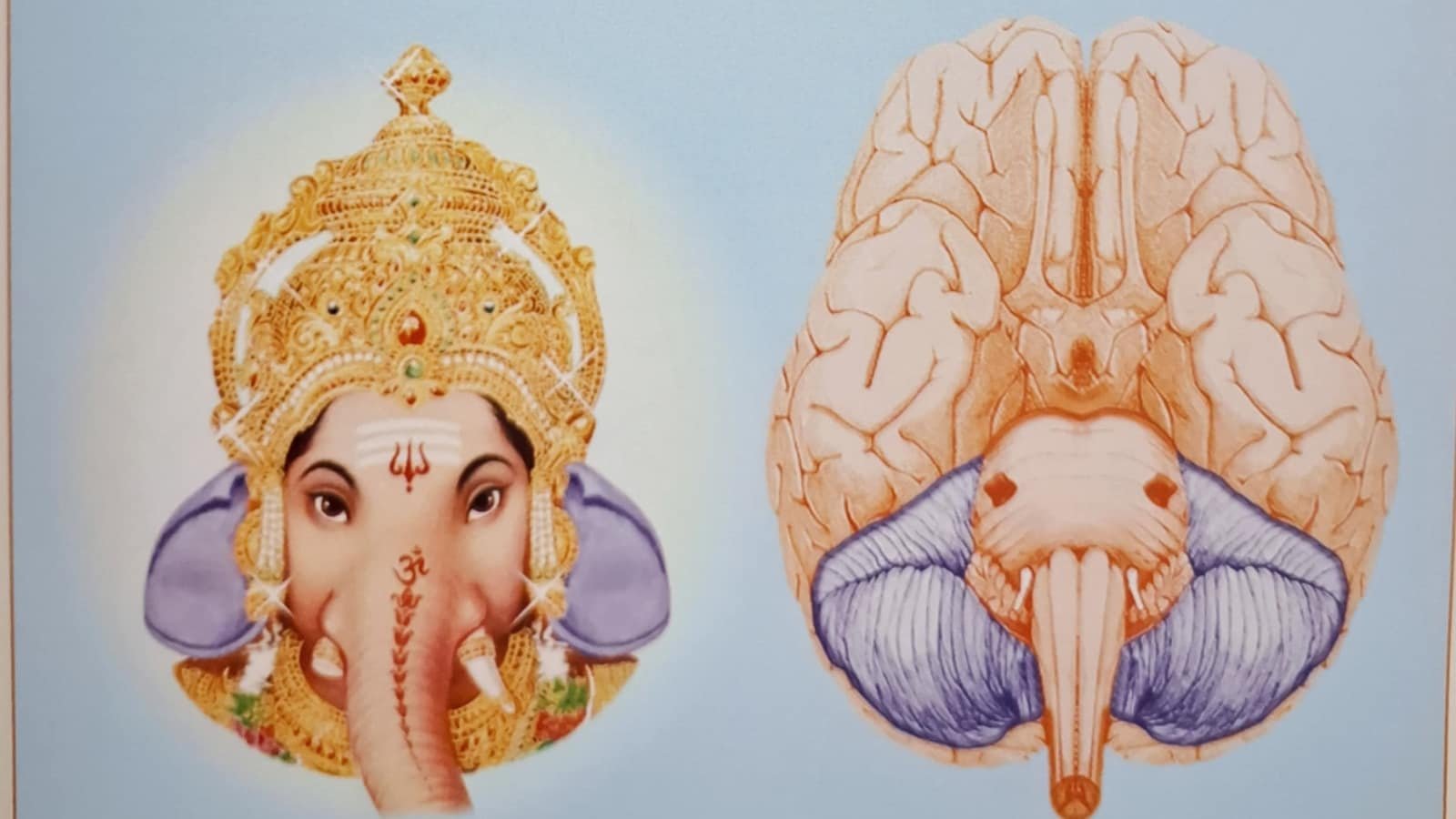Last Updated:June 03, 2025, 17:33 IST
Ganesha’s divine form mirrors the architecture of the human brain, bridging ancient wisdom and modern neuroscience.
To understand Ganesha in this way bridges spirituality and science, presenting the divine not only in temples and scriptures but also in the architecture and function of the human brain.
In the Vedic perspective, the Veda is more than a text or a collection of hymns, it is the fabric of natural law, the very structure of creation itself. These eternal resonances are said to structure the universe at every level, from atoms to galaxies and everything in between. Thus, human physiology is not merely the result of biological processes, but a performance of the same natural laws described in the Veda laws that also govern human behavior and consciousness. Dr Tony Nader (Born: Tanios Abou Nader, neuroscientist, researcher, university president, author and leader of the Transcendental Meditation movement shares all you need to know:
When examined through this lens, the ancient imagery and symbolism associated with deities like Lord Ganesha reveal a remarkable relationship with features and functions of the human brain. The shape and characteristics of Ganesha—fondly known as the remover of obstacles and protector of new beginnings—mirror the structures and processes of the brainstem, the entry point for all neural activity in the body.
The cerebellum, for example, corresponds to Ganesha’s large ears. Just as Ganesha listens attentively to the Mahabharata as dictated by Rishi Vyasa ensuring that sound reflects meaning, the cerebellum compares intention with action, refining our motor coordination and maintaining balance.
The pons, conceptualized as Ganesha’s face, controls sensory information, behavioral performance, and autonomic functions like breathing and sleep. It symbolizes Ganesha’s awareness and his role in managing perception and life-sustaining systems.
The medulla oblongata, likened to Ganesha’s trunk, regulates critical life functions such as heart rate, blood pressure, and respiration. Just as Ganesha’s trunk is a powerful, adaptable tool that helps him overcome obstacles, the medulla ensures the smooth flow of vital energy and maintains physiological stability.
Other anatomical structures support this parallel. The trigeminal nerves which govern facial sensation and movement can be compared to Ganesha’s eyes, taking in and interpreting sensory information. The pontine nuclei, involved in body posture and reflexes, align with the symbolic function of the tusks, which represent both precision and balance.
These neurological parallels illustrate how the form of Ganesha exists in the nervous system not only as a metaphor but as a structural and functional reality. The symbolism in the Vedic literature is not merely poetic—it is remarkably precise, describing physiological truths that have echoed through human consciousness for millennia.
The names and attributes of Ganesha: Vinayaka (the guide), Vighnaraj (remover of obstacles), Chakravarti (ruler of the universal wheel) mirror the brainstem’s primacy in sustaining life and maintaining order in the body.
These correlations are not coincidental. They reflect a deep understanding of the unity between consciousness, nature, and physiology. The Vedic seers could perceive the structure of the universe within themselves, and their sacred literature is infused with rich symbolism that reflects this inner knowledge. When modern science views the human body through a similar lens, the parallels become self-evident.
To understand Ganesha in this way bridges spirituality and science, presenting the divine not only in temples and scriptures but also in the architecture and function of the human brain.

Swati Chaturvedi, a seasoned media and journalism aficionado with over 10 years of expertise, is not just a storyteller; she’s a weaver of wit and wisdom in the digital landscape. As a key figure in News18 Engl…Read More
Swati Chaturvedi, a seasoned media and journalism aficionado with over 10 years of expertise, is not just a storyteller; she’s a weaver of wit and wisdom in the digital landscape. As a key figure in News18 Engl… Read More
- First Published:
#Ganesha #Resides #Human #Brain #Vedic #Scientific #Revelation



